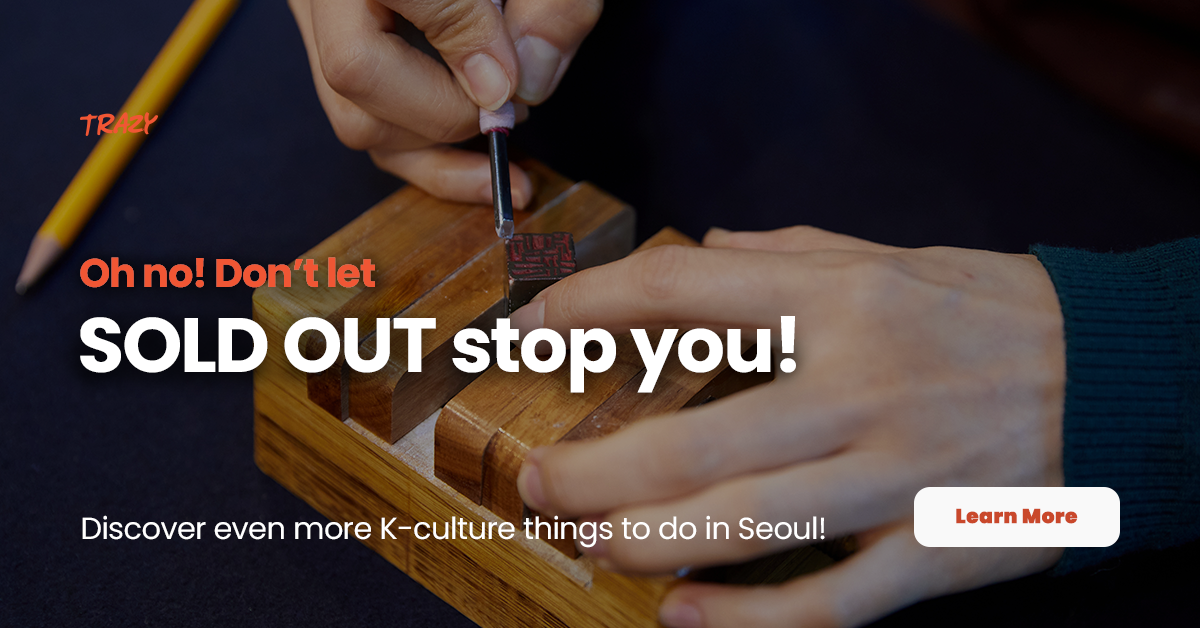Create Your Own Handkerchief or Scarf with Traditional Natural Dye
4.5(2 Reviews)
Checked out by 2.2k travelers
Availability
Minimum Pax
Confirmed
Ticket
Meet Location
- Haneul Mulbit Workshop at Bukchon Hanok Village
Create Your Own Handkerchief or Scarf with Traditional Natural Dye Options
Handkerchief natural dyeing
Scarf natural dyeing
Promotion
▷ Currently Unavailable? We've Got You Covered!

Don't let a sold-out activity stop you - We've got other amazing K-culture experiences waiting for you! Discover more exciting options here.
Overview
You will have the chance to make your own deep blue handkerchief or scarf using Korean traditional natural dyeing technique -- "Indigo dyeing (‘Jjok’ in Korean)." With the guidance of professional experts, you can create your own pattern by folding, crumpling or even tying with a rubber band.
You'll be mesmerized by the beauty of the color purely from the nature. Another fun part is in waiting and imagining how the color and pattern of your piece will come out.
About traditional natural dyeing
Traditional Korean natural dyes are vegetable dyes from plants – roots, berries, bark, leaves, and wood — and other organic sources such as fungi and lichens. The red color from Sapan wood and safflower, yellow color from gardenia seeds, purple color from gardenia and blue color from the indigo plant are typically used. Products dyed with natural materials tend to have a softer feel than artificially dyed ones and breathe better as well, making them more elegant and practical fabric products.
History of Indigo dyeing in Korea
Records of indigo dyeing in Korea date back to the Three-Kingdoms period (B.C. 57-A.D. 676), though earlier Chinese accounts also mention blue clothes as one of the common products of earlier tribes in the Korean Peninsula. By the time of the Goryeo period (918-1392), the government had recognized the importance of the dyeing industry and set up public factories to produce dyed fabric for commercial sale. Natural dyeing persisted through the 20th century, when imported artificial dyes from Japan and the West began to replace traditional techniques.
You'll be mesmerized by the beauty of the color purely from the nature. Another fun part is in waiting and imagining how the color and pattern of your piece will come out.
About traditional natural dyeing
Traditional Korean natural dyes are vegetable dyes from plants – roots, berries, bark, leaves, and wood — and other organic sources such as fungi and lichens. The red color from Sapan wood and safflower, yellow color from gardenia seeds, purple color from gardenia and blue color from the indigo plant are typically used. Products dyed with natural materials tend to have a softer feel than artificially dyed ones and breathe better as well, making them more elegant and practical fabric products.
History of Indigo dyeing in Korea
Records of indigo dyeing in Korea date back to the Three-Kingdoms period (B.C. 57-A.D. 676), though earlier Chinese accounts also mention blue clothes as one of the common products of earlier tribes in the Korean Peninsula. By the time of the Goryeo period (918-1392), the government had recognized the importance of the dyeing industry and set up public factories to produce dyed fabric for commercial sale. Natural dyeing persisted through the 20th century, when imported artificial dyes from Japan and the West began to replace traditional techniques.
Price
| Option | Price |
|---|---|
| Handkerchief natural dyeing | Person |
| Scarf natural dyeing | Person |
*The same price applies for both adults and children.
How to book
- 1. Complete your booking.
- 2. Check your email.
- 3. Enjoy it.
Cancellation policy
All times are based on Korea Standard Time (KST) (GMT + 9 hours)
3~5 days before the reserved date: 80% refund
2 days before the reserved date or less: Non-refundable
3~5 days before the reserved date: 80% refund
2 days before the reserved date or less: Non-refundable
Destination
Haneul Mulbit Workshop (Traditional natural dyeing)
Address: 35-167 Samcheong-dong, Jongno-gu, Seoul, South Korea
Phone Number: (+82) (0)2-765-9970
Phone Number: (+82) (0)2-765-9970
Reviews
Top Tours in South Korea
Seoul
Jeju
Busan
Daegu
Top Activities in South Korea
Seoul
Jeju
Busan
Incheon
Daegu
Top Tickets & Shows in South Korea
Seoul
2025 MMA Melon Music Awards Ticket Package (Dec 20)
SBS Inkigayo Seoul Tour Package
Lotte World Discount Ticket
Seoul ↔ Phoenix Park Ski Resort Shuttle Bus
N Seoul Tower Observatory Discount Ticket
Lotte World Tower Seoul Sky Discount Ticket
2026 D Awards Tickets Package (Feb 11, 2026)
Everland One Day Pass (Ticket Only)
Jeju
Horse Show in Jeju
Gokart/ Water Sled/ Zipline/ Paintball in Jeju
Horse Riding on Jeju Island's HIllside
Arte Museum in Jeju Discount Ticket
Maze Land Jeju Discount Ticket
Jeju Loveland Ticket
Aqua Planet Jeju Discount Ticket + Ocean Arena Show + Special Exhibition
Jeju Rail Bike Ticket
Seogwipo Ferry Cruise
Jeju Jet Boat - near Jungmun Tourist Complex
Busan
Daegu
